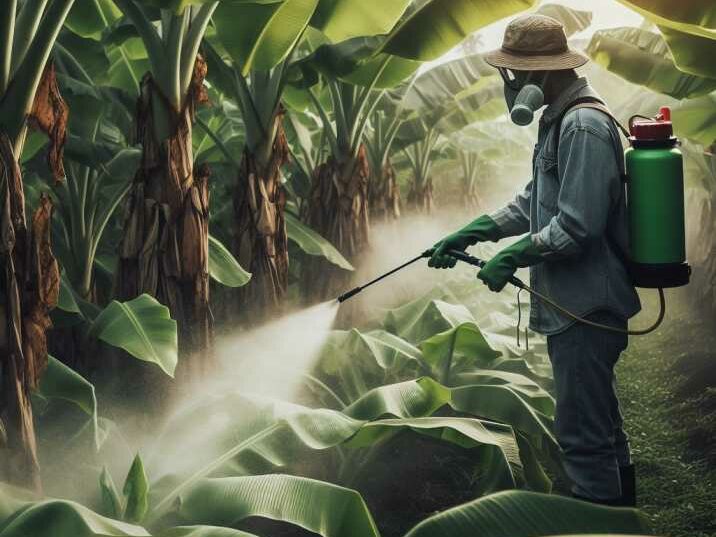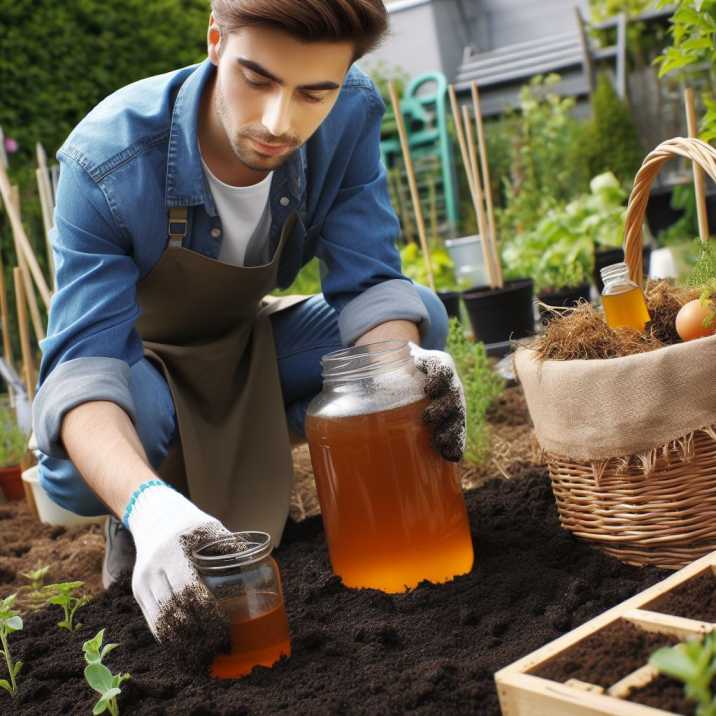Prevent and treat diseases in baby banana plants
Table of Contents
Introduction:
Growing baby banana plants can be a rewarding experience for any gardener. However, like any plant, they are susceptible to diseases that can hinder their growth and productivity. In this beginner’s guide, we’ll explore effective organic methods to prevent and treat diseases in baby banana plants, ensuring they thrive in your garden.
Identifying Potential Threats
Understanding Common Diseases in Baby Banana Plants
Before delving into prevention and treatment, it’s crucial to recognize the common diseases that affect baby banana plants. Some of the most prevalent diseases include:
- Fusarium Wilt
- Panama Disease
- Anthracnose
- Leaf Spot
- Bacterial Wilt
Understanding these diseases will help you take proactive measures to protect your plants.
Cultural Practices for Disease Prevention :
Establishing Healthy Growing Conditions
One of the fundamental principles of organic disease management is promoting plant health through cultural practices. Here are some strategies to implement:
- Proper Soil Drainage: Ensure adequate drainage to prevent waterlogging, which can lead to root diseases.
- Balanced Nutrition: Provide a balanced fertilizer regimen to support plant growth and strengthen resistance to diseases.
- Pruning: Regularly prune dead or diseased leaves to promote airflow and reduce the spread of pathogens.
- Crop Rotation: Avoid planting bananas in the same location consecutively to minimize disease buildup in the soil.

Biological Controls :
Harnessing Nature’s Defenses
Biological controls involve using natural organisms to combat plant diseases. Here are some methods to incorporate into your organic management plan:
- Beneficial Microorganisms: Apply compost tea or microbial inoculants containing beneficial bacteria and fungi to enhance soil health and suppress pathogens.
- Predatory Insects: Introduce predatory insects like ladybugs and lacewings to control pests that transmit diseases to banana plants.
- Plant Diversity: Planting a variety of companion plants can attract beneficial insects and create a diverse ecosystem that supports natural disease control.
Organic Disease Treatments :
Safely Combatting Infections
When faced with disease outbreaks, organic treatments offer effective solutions without harmful chemicals. Here are some options to consider:
- Neem Oil: Neem oil is a natural fungicide and pesticide that can control a wide range of banana plant diseases when applied according to label instructions.
- Copper-based Sprays: Copper-based fungicides are approved for organic use and can help manage fungal diseases like anthracnose and leaf spot.
- Baking Soda Solution: A mixture of baking soda and water can be used as a foliar spray to control powdery mildew and other fungal infections.
- Garlic and Chili Pepper Spray: Create a homemade spray using crushed garlic and chili peppers steeped in water, which acts as a natural deterrent against pests and diseases.

Monitoring and Early Detection Subtitle:
Vigilance for Healthy Plants
Regular monitoring is essential for early detection of diseases in baby banana plants. Here’s how to stay vigilant:
- Visual Inspection: Routinely inspect plants for any signs of discoloration, wilting, or abnormal growth.
- Pest Surveillance: Keep an eye out for pest activity that could indicate the presence of disease-carrying insects.
- Record Keeping: Maintain a gardening journal to track plant health and note any changes or abnormalities observed.
Conclusion:
By implementing these organic methods for disease prevention and treatment, you can nurture healthy baby banana plants that thrive in your garden. Remember to prioritize plant health through cultural practices, harness the power of biological controls, and employ organic treatments when necessary. With diligence and care, you can enjoy a bountiful harvest of delicious bananas while minimizing the impact of diseases on your plants.
FAQs (Frequently Asked Questions)
1. Can baby banana plants be grown indoors? While baby banana plants can thrive indoors under the right conditions, they generally prefer outdoor environments with ample sunlight and adequate airflow. However, if you have sufficient space, proper lighting, and humidity control, you can successfully grow baby banana plants indoors.
2. How often should I water baby banana plants? Baby banana plants require consistent moisture, but overwatering can lead to root rot and other diseases. It’s essential to water the plants thoroughly when the top inch of soil feels dry, allowing excess water to drain away. In general, aim to water your baby banana plants every 3-4 days, adjusting frequency based on environmental conditions.
3. What are the signs of disease in baby banana plants? Signs of disease in baby banana plants include yellowing or browning of leaves, wilting, stunted growth, and the presence of dark spots or lesions on leaves. Additionally, if you notice any unusual discoloration, deformities, or abnormalities in plant growth, it’s essential to inspect the plants closely for potential diseases.
4. Can I use chemical pesticides on baby banana plants? While chemical pesticides may offer quick solutions to pest problems, they can harm beneficial insects, soil health, and overall plant vitality. Organic methods are preferred for managing pests and diseases in baby banana plants, as they are safer for the environment, beneficial organisms, and human health.
5. How long does it take for baby banana plants to produce fruit? Baby banana plants typically take 9 to 15 months to produce fruit under optimal growing conditions. However, the timing may vary depending on factors such as climate, soil fertility, and the banana plant variety. Patience and proper care are essential for nurturing baby banana plants until they reach maturity and bear fruit.
